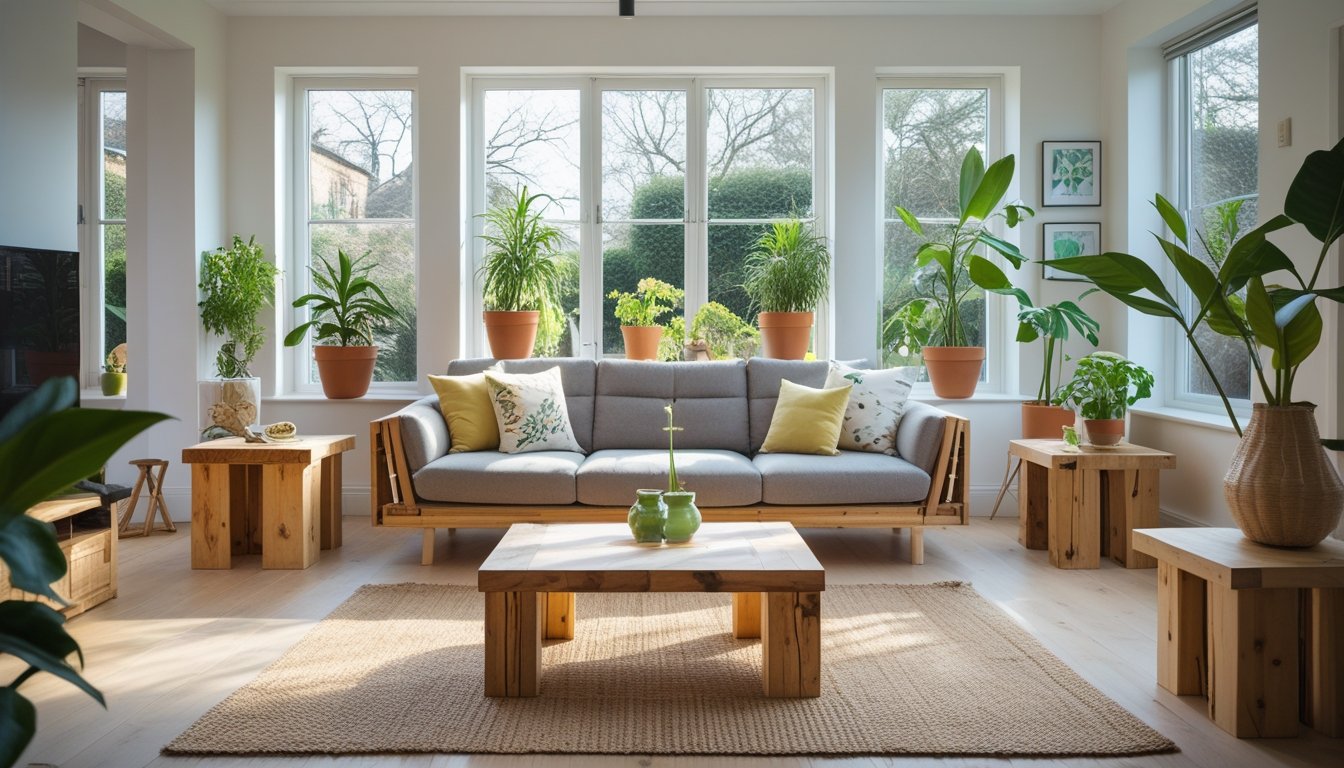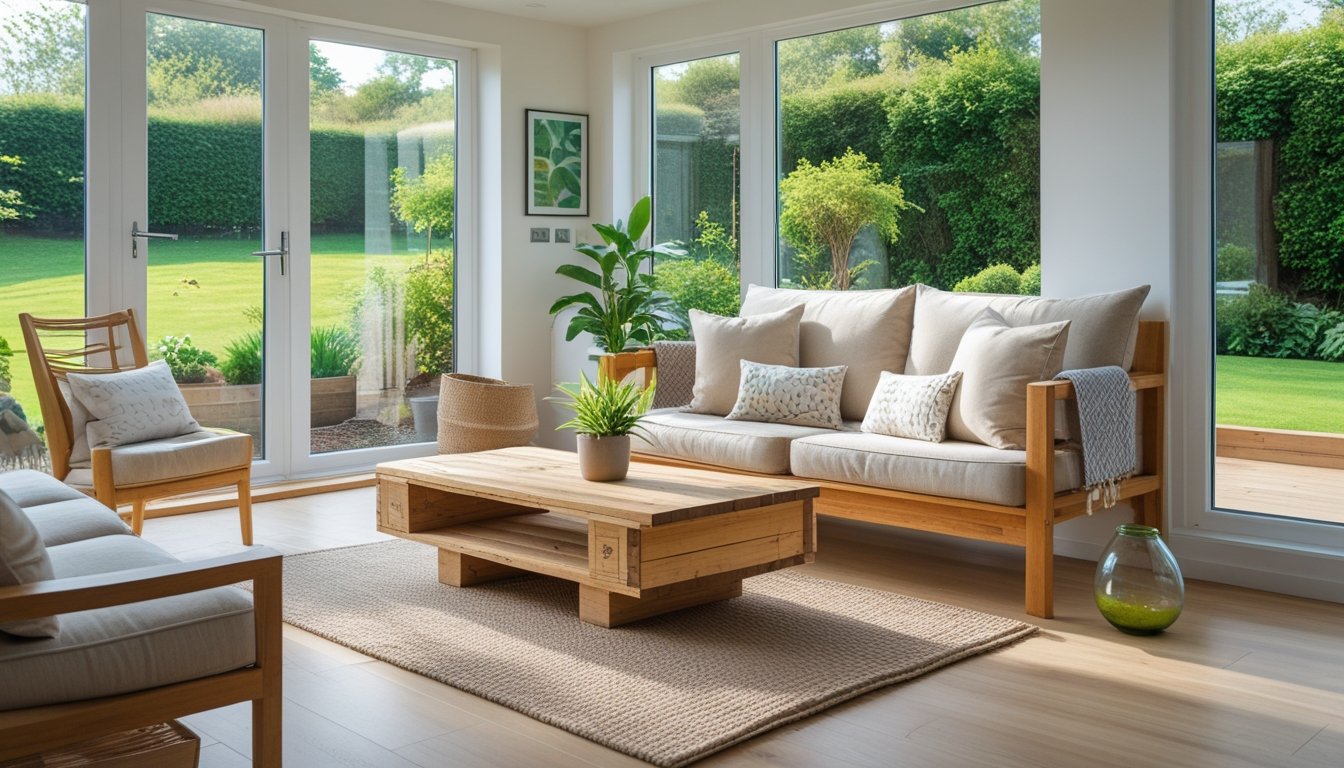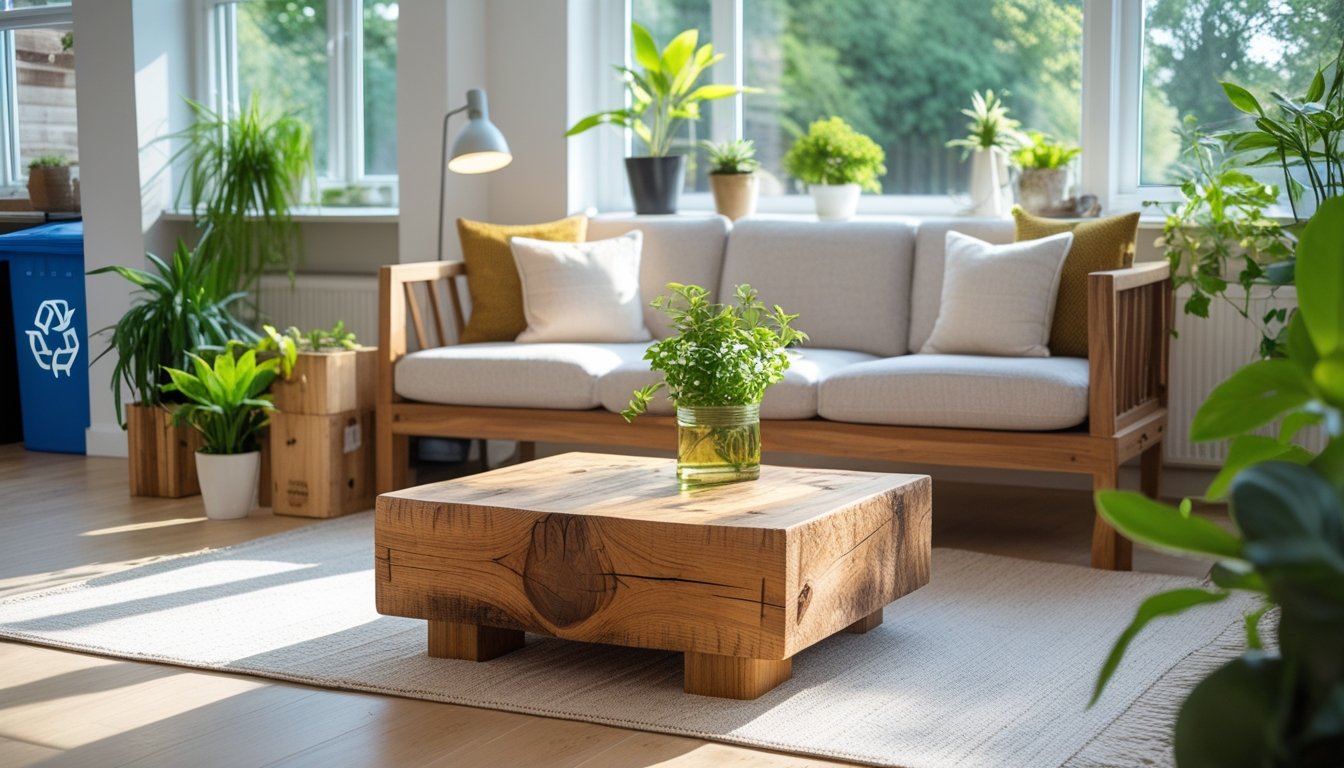Late updated: 05 Oct 2025 09:10
Written by: Eleanor Hartman
Guide To Choosing Eco-Friendly Furniture In The UK: Sustainable Home Solutions
Choosing eco-friendly furniture is not just a trend; it's an essential commitment to a more sustainable lifestyle in the UK. As we become increasingly conscious of the environmental impacts of our everyday choices, integrating sustainable materials and practices into our home furnishings becomes crucial. The best way to ensure your furniture is eco-friendly is to look for items made from responsibly sourced or recycled materials.

Navigating the world of sustainable furniture can be overwhelming, given the variety of options and claims made by manufacturers. It's important to identify reputable brands that prioritise ethical sourcing and environmentally-friendly production methods. By supporting these businesses, we can contribute to a healthier planet while enjoying stylish and functional home furnishings.
Eco-friendly furniture challenges us to rethink our environment both aesthetically and ethically. We can embrace practices that support local artisans and reduce our carbon footprint. This guide will explore key considerations in choosing sustainable furniture, offer insights into eco-friendly materials, and highlight noteworthy brands within the UK market.
Key Takeaways
- Opt for furniture made from responsibly sourced or recycled materials
- Support reputable brands prioritising ethical production
- Consider both aesthetic and ethical aspects in furniture choices
Key Considerations When Choosing Eco-Friendly Furniture In The UK

When selecting eco-friendly furniture in the UK, we must focus on sustainable standards, responsible sourcing, and ethical manufacturing. These elements play a crucial role in ensuring furniture is not only environmentally friendly but also lasts longer and supports sustainable living.
Understanding Sustainable Furniture Standards
Sustainable furniture goes beyond just the use of eco-friendly materials. It's about evaluating the entire lifecycle of a product, from production to disposal. This includes ensuring materials are responsibly sourced and that manufacturing processes minimise waste and energy use.
Eco-friendly options often incorporate recycled or upcycled materials that reduce deforestation and resource depletion. By choosing furniture made from such materials, we promote the conservation of natural resources and reduce the carbon footprint associated with traditional furniture production. Ethical furniture brands often lead in innovative practices that focus on long-term environmental health.
Certification Schemes and Responsible Forest Management
Certification schemes like the Forest Stewardship Council (FSC) and the Programme for the Endorsement of Forest Certification (PEFC) provide standards that ensure woods are sourced from responsibly managed forests. These certifications help us identify furniture that contributes positively to reducing deforestation.
By opting for furniture with these certifications, we support ethical forest management practices. This includes maintaining biodiversity, protecting water resources, and supporting the rights and livelihoods of workers. The presence of an FSC or PEFC label guarantees that the furniture we choose adheres to stringent environmental and social standards.
Eco-Conscious Furniture Manufacturing Processes
In addition to materials and certifications, the manufacturing process itself plays a vital role in the sustainability of furniture. Eco-conscious production aims to minimise environmental impact through efficient use of resources and reduction of emissions. This often involves the use of renewable energy and sustainable materials like bamboo, which grows rapidly and requires minimal resources.
Ethical furniture brands often prioritise fair labour practices and transparent supply chains. By supporting these brands, we contribute to sustainable living practices. The manufacturing process is as important as the materials used, as it encompasses the principles of sustainability from start to finish.
Eco-Friendly Materials, Brands, And Alternatives
Exploring eco-friendly furniture involves understanding materials and making informed choices about brands and products. From sourcing sustainable wood to opting for recycled materials, we have several alternatives that can positively impact the environment and our living spaces.
Sourcing Sustainable And Reclaimed Wood
Sustainable wood plays a vital role in eco-friendly furniture choices. We should look for FSC-certified wood, as this certification ensures that the wood is harvested responsibly. Choosing wood from sustainably managed forests helps in maintaining ecological balance.
Reclaimed wood is another fantastic option. It repurposes old wood from buildings and furniture, reducing deforestation and promoting waste reduction. This type of wood often has unique characteristics, adding a rustic charm to furniture while ensuring ethical sourcing.
Using recycled wood supports the circular economy by reusing materials, reducing landfill waste, and encouraging environmentally-conscious consumer behaviour.
Recycled And Second-Hand Furniture Options
Opting for second-hand furniture is an excellent way to contribute to sustainability. By selecting pre-loved items, we significantly decrease the demand for new resources. This choice not only saves money but also reduces the carbon footprint associated with manufacturing and transporting new furniture.
Recycled materials, such as metals or plastics, offer durable and stylish alternatives without burdening the environment. Producing furniture from recycled inputs requires less energy compared to processing new ones, making it energy-efficient.
Avoiding "fast furniture" is crucial. Instead, prioritising pieces that are built to last helps in natural resource conservation and waste reduction, further improving indoor air quality.
Organic Fabrics And Natural Finishes
When it comes to upholstery and finishes, organic fabrics are a wise choice. Materials such as organic cotton, linen, and hemp are grown without harmful pesticides, improving indoor air quality by minimising toxic emissions. These fabrics offer comfort and aesthetic appeal while prioritising ecological integrity.
Using natural finishes like beeswax or oils can enhance the longevity of wooden furniture. Low-VOC paints and finishes are preferable, as they release fewer volatile organic compounds, thus ensuring healthier living spaces.
By choosing sustainable materials and products, we can support brands that align with our eco-conscious values, effectively contributing to a more sustainable future.
Frequently Asked Questions

Exploring eco-friendly furniture involves understanding sustainable materials, verifying manufacturers' green credentials, and recognising key certifications. By considering factors such as local production and product lifecycle, we contribute to a healthier planet. Here's how these aspects matter:
What are the key materials to look for when selecting sustainably-made furniture?
We should prioritise responsibly sourced woods, such as reclaimed or FSC-certified, as well as metals and plastics that have been recycled. Natural fibres like organic cotton, wool, and bamboo are also beneficial due to their minimal environmental impact.
How can I verify the eco-credentials of furniture manufacturers?
Researching a manufacturer's policies and production methods provides insights. We can look for their sustainability statements, third-party audits, and customer reviews. Transparency in sourcing and production often reflects genuine eco-friendly intentions.
What certifications should I check for to ensure furniture is eco-friendly and ethically produced?
Certifications like the Forest Stewardship Council (FSC), Cradle to Cradle, and GREENGUARD indicate sustainable practices. These labels assure us that the furniture meets recognised environmental and social standards. Ethical production is vital for reducing environmental harm.
In what ways does purchasing locally-made furniture benefit the environment?
Buying locally reduces transportation emissions and supports regional economies. It also often ensures that production aligns with local environmental regulations. When we choose local furniture, we contribute to shorter supply chains, lessening our carbon footprint.
What steps can I take to care for eco-friendly furniture to enhance its longevity?
Proper maintenance is key to extending the lifespan of our furniture. Regular cleaning using mild, non-toxic products preserves materials. Repairing minor damages promptly and avoiding excess moisture exposure also help maintain integrity over time.
How does the life cycle of furniture impact its environmental footprint?
From production to disposal, each phase affects the environment. We should consider durable furniture that can be recycled or upcycled at the end of its use. By choosing long-lasting pieces, we minimise waste and resource depletion.